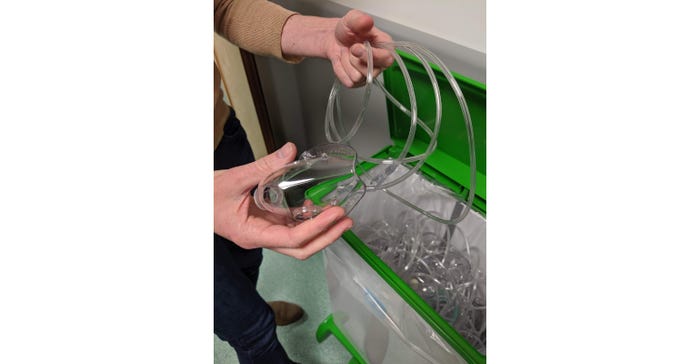How 10 years of recycling PVC medical devices can inspire stakeholders to adopt circular healthcare initiatives that are easy to implement.
February 3, 2021

In the recent MD+DI article, “Identifying Recycling and Circularity Opportunities for Healthcare Plastics,” the Healthcare Plastics Recycling Council calls for recycling to solve the challenge of increasing medical plastic waste owing to COVID-19. The article contains many useful insights from a webinar on healthcare plastic recycling. However, we would like to encourage hospitals and recyclers to get started with actual projects and not try to strive for perfection in the first shot. As Voltaire said, perfect is the enemy of good.
Our advice stems from 10 years of successful and safe collection and recycling of used PVC medical devices around the world. It all started more than 10 years ago in Australia and has now spread to 8 countries, most recently Canada. Worldwide more than 200 hospitals now collect used PVC oxygen masks, tubing, and empty dialysis and IV bags for recycling.
The recyclate is high grade and turned into useful products. In South Africa, for instance, IV bags become school shoes that enable education for impoverished children. In Australia, the recyclate is used for industrial and garden hoses and ergonomic mats that improve the work environment.

There are several reasons why it makes sense to focus on PVC plastic. For one, PVC is easily recyclable and can be recycled multiple times without losing its technical properties. Second, it is possible to manufacture PVC-only devices, as the material can be made both rigid and soft. This is crucial for recycling, which is often hampered by multi-material products. Third, PVC is the single most-used polymer for disposable medical devices. This means large quantities of recyclable plastic is readily available, and that is key for recycling companies that depend on a steady flow of input material.
For now, only medical devices used on pre-screened patients for elective surgery are collected. But studies done by virologists in Belgium show that only a 72-hour quarantine period is needed for waste contaminated by coronavirus before it can be safely recycled.
As Healthcare Plastics Recycling Council’s Executive Director Peylina Chu points out, challenges remain. One aspect is transportation costs that can be mitigated by investing in a small granulator that can greatly minimize the waste volume prior to transportation.
A second challenge is sorting—should it be done by humans at source or centrally at high-tech sorting plants? Based on our decade of experience in recycling medical PVC, our advice is to start collecting at the wards and not wait for a technological fix that can take many years to develop. Though healthcare professionals are very busy, experience from Australia and elsewhere show that staff are highly motivated to run the extra mile. As one nurse said, “we recycle at home—why can’t we do it at the workplace as well?”
Several other challenges can be identified. But our message is to get started and then surmount the different challenges along the way.
Ole Grøndahl Hansen serves as project manager for PVCMed Alliance. PVCMed Alliance is The European Council of Vinyl Manufacturers's value chain platform to raise awareness and promote informed decisions about the use of PVC in healthcare. PVCMed Alliance represents all parts of the PVC medical industry chain, namely resin and plasticiser producers and PVC converters. The alliance was established in 2012.
About the Author(s)
You May Also Like


